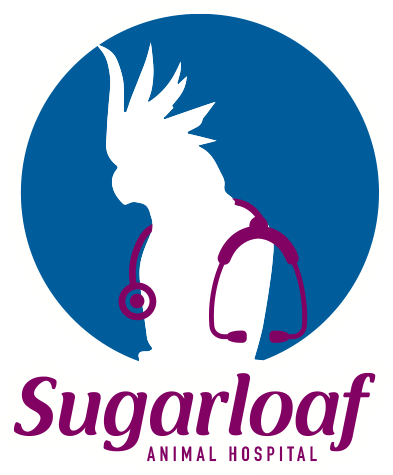Rabbit calicivirus disease (RCD) is a very serious infectious disease that can kill pet rabbits in Australia. There is some confusion about some aspects of this disease, and given some recent publications, now is a good time to clear the air with some good evidence-based information!
RCD is known by a suite of other names, as it is a disease that occurs in many countries. Here at the Sugarloaf Animal Hospital in Newcastle, NSW, Australia, we also know the disease as Rabbit Haemorrhagic Disease Virus, and it is known by a number of variations of this name as well. Some people new to rabbits confuse RCD with myxomatosis, since they both can be transferred by biting insects, and they both are used as biological controls of wild rabbits, as they both kill almost all (if not all) rabbits that become infected. In the UK there is a dual vaccine which protects against both RCD and calicivirus.
But RCD is a completely separate disease to myxomatosis.
RCD was first identified in farmed rabbits (Oryctolagus cuniculus) in China in 1984. Some suspect it originated from rabbits in Europe, since rabbit sera from Czeckoslovakia stored in 1978 demonstrated antibodies to RCD. Then very soon after it spread to back to Europe, then other parts of Asia, and Mexico. So in the late eighties, virulent Rabbit Calicivirus was identified as a possibly suitable agent for biological control of feral rabbits in Australia. Work began on the virus at the CSIRO Australian Animal Health Laboratory in Geelong in 1991. During fields trials in 1995 the disease escaped from Wardang Island, South Australia. The virus swept through the arid interior of Australia and killed absolutely huge numbers of rabbits. Some estimate that more than 10 million rabbits perished in the two months after the virus made it to the mainland.
Rabbit Calicivirus infection really is a horrible way to die, whose only slim saving grace is that it generally happens very quickly. The virus quickly causes massive cellular death in the liver and spleen. There is a overwhelming release of vasoactive chemicals which rapidly leads to a condition known as Disseminated Intravascular Coagulopathy (DIC) where the blood clots and bleeds inappropriately at the same time in a variety of tissues in the body. In some adult rabbits that are unvaccinated this whole process may take as little as a couple of hours. Rabbits under 8 weeks of age do not support the growth of the virus in the liver and spleen, and may show much milder clinical signs. However we have seen just recently in the Kurri-Weston area, an outbreak that affected kits only a couple of weeks old. In general though the time from infection to disease is 1-3 days, with death ensuing 24-48 hours later.
Many rabbits simply show no signs of a problem, and then die suddenly. If they do show symptoms, they are generally non-specific, like a high temperature, general discomfort, lethargy, and inappetance – all signs that many rabbit diseases cause. A bloody discharge from the nostrils, or other orifices makes us worry much more about RCD. If a rabbit survives the first few days, they often go on to develop liver disease, and then lose weight and get increasingly lethargic, as well as developing classic signs of gut stasis.
There is no treatment for Rabbit Calicivirus Disease infection. Pet rabbits are especially susceptible to the infection with nearly 100% mortality. Vaccination provides the only protection.
RCD virus is generally transferred to an uninfected rabbit by direct contact with infected rabbit or objects that an infected rabbit has touched. The virus may also be blown on dust particles in the wind or by flies, mosquitoes, or rabbit fleas within a warren. RCD is very persistent, and is know to survive in contaminated areas for more than 7 months!!
The diagnosis of RCD can be very hard to make, and here at Sugarloaf Animal Hospital we depend on DNA testing at the NSW Department of Primary Industries laboratory. It is only useful on tissue after the rabbit has died, and the results may take a couple of weeks to come back. As a consequence the test might not be useful in individual rabbits but is very useful in terms of populations and epidemiology.
Rabbit Calicivirus Disease can NOT be transferred to humans, and is therefore not a zoonosis.
There are a variety of strains of RCD that are often named according to their country of origin. So the original RCD that escaped from Wardang Island was known as the Czech reference strain (Czech V351), but it has evolved in the wild in Australia since 1995 so that it is no longer precisely the same. As it has evolved in Australia, it has become less effective as a biological control. There was an outbreak in South Australia and then later in Canberra of a strain from Spain, known as RHVD2 in 2014, but it would appear that this strain did not become established. Vaccination was not completely protective against this strain.
There was a series of outbreaks in Sydney, and the NSW Central Coast, as well as one case in Canberra, in late 2014 and early 2015, of a strain known as Chinese RCVa (because it is very similar to a known strain from China, but we don’t know if it really came from China). Many of the affected rabbits were vaccinated, and so we at least know the vaccine is not as effective against this strain as it is for the original Czech reference strain. We do not know how any of these strains came to be in Australia, or even if they were inadvertently brought here or if they are mutations of virus that are already here. Chinese RCVa (sometimes called Chinese RHDVa) caused a major outbreak on a rabbit meat farm on the NSW Central Coast. All rabbits on the farm were also vaccinated annually with the Cylap® RCD Vaccine (Zoetis®) BUT only those rabbits vaccinated in the previous 6 months survived – those vaccinated more than 6 months ago all perished. This single example has lead to the cautious general recommendation amongst veterinarians who deal with rabbits to vaccinate rabbits with the calicivirus vaccine once every 6 months. It is not the best scientific evidence to base a general recommendation on, but it is all we have at the moment.
To add further confusion, the Federal Government’s Invasive Plants and Animals Committee are looking at the impending release of a Korean strain, the so-called RHDV K5, under a program known as “RHD Boost” to enhance the effectiveness of biological control of the original Czech reference strain. The Invasive Animals CRC on their PestSmart website report a small scale test where vaccination was protective against challenge by the new K5 virus.
On a more complex ethical note, rabbit owners should be aware that many local councils have organised release programs, where material from deceased rabbits is spread through urban areas where rabbits are a pest. For example, in March 2015, the 20 councils and land trusts in the Urban Feral Animal Action Group of Sydney, overseen by Greater Sydney Local Land Services, started their rabbit control program by distributing RCD infected material into parks and bushland across Sydney in areas such as Parramatta and Sutherland Shire. Since the local environmental contamination can raise the risk for pet rabbits, it is wise to be aware of any releases of RCD by local government authorities.
The wild rabbit population has exploded due to recent heavy rains http://ow.ly/HZ4cY
Wild rabbits: calicivirus used to control exploding Sydney populations
They’re back in big numbers and the solution is uncomfortable.
smh.com.au
I understand that the Rabbit Calicivirus was deliberately released into the environment of the south-western part of the Lake Macquarie State Conservation Area in 2005, but I am unaware of subsequent attempts to control rabbit populations by deliberate release of the disease in Lake Macquarie or Newcastle. This may all change when the new K5 virus is introduced in the near future.
As carers for companion rabbits we are very lucky to have access to the Cylap® RCD Vaccine and it has without a doubt saved many, many lives. The vaccine confers good (but not perfect) immunity and is, as far as we are concerned at the Sugarloaf Animal Hospital, essential to provide the best possible protection of all companion rabbits from rabbit calicivirus disease.
The Sugarloaf Animal Hospital currently recommends that you vaccinate your rabbits against RCD at 10-12 weeks of age and then given a booster every six months. Sugarloaf Animal Hospital’s Free Vaccines 4 Life program can be really beneficial to help control costs, and allow rabbit carers to provide the optimal care for their bunnies. Occasionally in the face of an outbreak rabbits may be vaccinated earlier than 10 weeks of age in which case a booster is recommended 4 weeks later.
There are some other actions that rabbit carers can take, and while none are as effective as vaccination, they each add just a little bit of extra protection and are worth the effort. Preventing contact with wild rabbit populations dramatically limits the opportunity for direct contagion, which is the main avenue for infection. Controlling biting insects like midges and mosquitoes, as well as fleas, also removes one of the other primary methods of catching the disease. We strongly recommend using Revolution® monthly to control fleas (as well as other rabbit parasites).
While we are on the topic of vaccines it is worth discussing the potential for vaccine reactions. Every veterinarian who works with rabbits will be able to report occasional reactions to the RCD vaccine. Rabbit carers are increasingly turning to the world-wide web to inform their understanding of rabbit health and husbandry. As with many topics there is much confusing data about the safety and the importance of RCD vaccination. As an example, the results of an online survey of rabbit owners in the United Kingdom on vaccine reactions conducted by a rabbit owner were recently available and the conclusion stated that the use of the Cylap® RCD vaccine should be avoided if other vaccinations against rabbit calicivirus could be sourced. There is no clear scientific evidence that one of the vaccines available in the UK is less likely to cause reactions than the other!
The broader literature suggests a rate of problems with vaccination in rabbits of between 1-9%. Fortunately there have been two recent publications which have provided a good deal of additional quality evidence on rates and types of adverse reaction in our local environment close to Newcastle. Dr Daniella Hsu presented on the rate of adverse events after RCD vaccination at the Bird and Exotics Veterinarian in Sydney to the Annual Conference of the Unusual and Avian Veterinarians Special Interest Group of the Australian Veterinary Association in September 2015. I was very lucky to be in the audience for Dr Hsu’s presentation. Dr Hsu revealed a rate of about 8% for adverse reactions that included localised effects, such as hair loss, scabiness, redness, and itchiness. Light body weight was the only factor that increased the likelihood of a reaction. All reactions were treatable.
A larger survey of 933 vaccinations in 705 rabbits in various veterinary hospitals in the greater Sydney area was reported in the Australian Veterinary Journal by Drs Tung, Phalen, and Toribio just last month (October 2015). They reported an adverse event rate of 1.8%, and like Dr Hsu they found local irritation effects to be the most common. They also found forelimb lameness and oedema, lethargy and gastrointestinal stasis occurred occasionally. The rate of adverse events dropped as the rabbits aged, but there was no other clear correlation. Their survey found the vast majority of reactions to be amenable to treatment. Their overwhelming conclusion, with which I strongly agree, was that the evidence confirmed the slight risks associated with vaccination were vastly outweighed by the horrendous consequences of not vaccinating.











